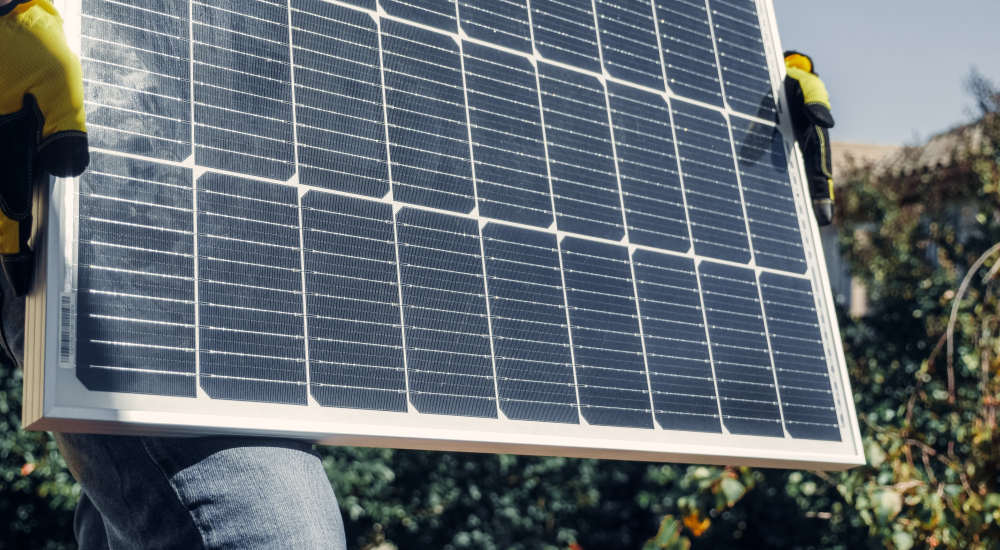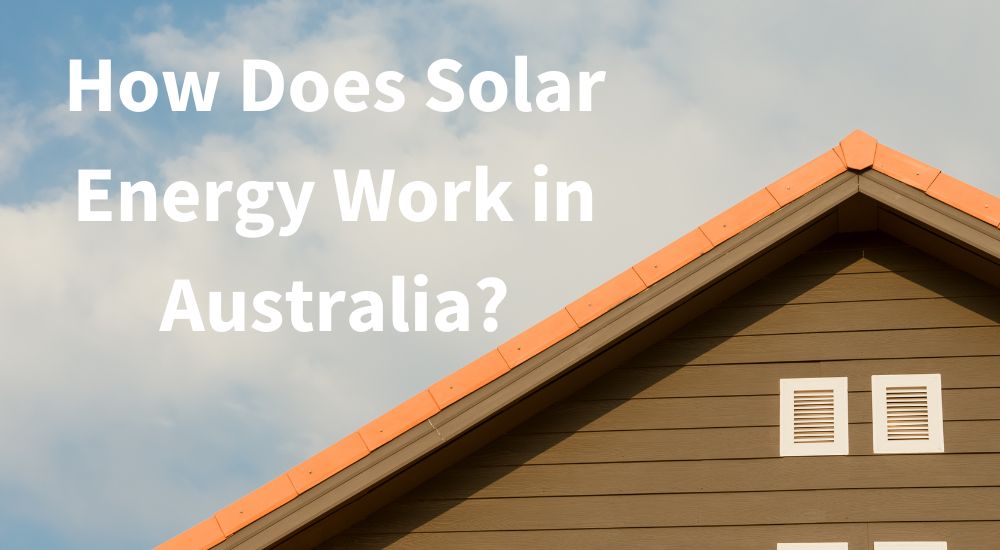Solar Power: What Are The Main Advantages Of Solar Energy?
Solar Power: What Are The Main Advantages Of Solar Energy?
Are you considering installing solar panels on the roof of your home or business?
Or perhaps you love travelling and would like to install solar panels on your RV?
After all, ramping inflation underpinned by rising electricity prices and geopolitical uncertainties is driving many Australians to seek alternatives to reduce their energy bill. And switching to solar energy can be a great way to lessen your energy costs while reducing your carbon footprint in the process.
Yet, the cost of solar panel installation can be steep.
So, is solar power worth it?
What are some of the main advantages of solar energy, and should you take the leap?
In this article, we’ll detail how solar power works before highlighting some of the main advantages and disadvantages of solar energy to help you make an informed decision.
Table of contents:
- How Does Solar Power Work?
- How Does Solar Energy Work in Australia?
- Pros and Cons of Solar Energy
- What Are The Advantages Of Solar Energy?
- What Are The Disadvantages Of Solar Energy?
- Time to Take Advantage of Solar Energy Now!
How Does Solar Power Work?
As the name suggests, solar energy depends on the sun.
There are two main types of solar power technologies: concentrating solar-thermal power (CSP) and solar photovoltaic (PV).
Solar Photovoltaic
Solar photovoltaic technology converts the sun’s energy into direct current electricity. And to do so, it uses semiconductors (usually made of crystalline silicon). When the sun hits the semiconductors on solar panels, they absorb the light and free electrons, which are then directed into an electrical current by an electric field.

Solar power system installations (or PV installations) require three main components: solar panels, a power inverter, and a meter. These three elements make it possible to capture solar energy, convert it into electricity and distribute it to all customers connected to the grid.
●Solar panels convert light directly into direct current electricity.
●The inverter then transforms the electricity obtained into a grid-compatible alternating current.
●The solar meter measures the electricity your home imports from the grid and the electricity that your home exports to the grid.
Solar energy is clean, emitting no greenhouse gasses. What’s more, the sun, although located more than 150 million kilometers from us, is a free and inexhaustible source of energy available all over the world.
And this explains the quick uptick in Australian households’ solar rooftops. Wonder whether your roof is suitable for solar? Check it out here.
Solar-Thermal Power
Solar thermal power harnesses the sun’s power to convert it into heat and generate electricity.
Concentrated solar thermal (CST) technology uses mirrors and receivers to collect and concentrate sunlight, heat a fluid (like water) at high temperatures, and create steam. The steam is then converted into mechanical energy in a turbine, which powers a generator, thus producing electricity.
One of the main advantages of CST technology is that the power output can be adjusted to the grid’s demand. That’s because CST power plants have a built-in ability to store up to 15 hours of energy and dispatch it in response to the grid demand, even throughout the night.
This technology can be used at a small scale to heat a home or on a much larger scale through CST power plants to generate electricity for an entire region.
How Does Solar Energy Work in Australia?
Australia is ideally placed for incorporating solar power as one of the main elements of its energy mix. That’s because the continent has the highest solar radiation per square meter in the world, receiving an annual amount of solar radiation on average 10 000 times larger than its total energy consumption!
With over 30% of Australian households boasting solar panels and 10% of the country’s electricity generated by solar PV between 2020 and 2021, Australia is gradually transitioning to solar power for its energy generation.
Households are leading the charge with 3 gigawatts of rooftop solar energy deployed in 2020 across the country and a 40% increase in solar panel installations in 2021. This takes the cumulative installed solar capacity to 22.3 GW as of mid-2021, meaning Australia has nearly tripled its capacity since 2017.

Yet, more investments are needed when it comes to solar farms and backup services. Unfortunately, a rise in wholesale electricity prices and national grid challenges, such as congestion and system strength issues, have curbed large-scale solar project investments over the last few years.
The good news is that Australia recently renewed its commitment to achieving net zero emissions by 2050. And it also committed to spending over $20 billion to ensure the grid can handle more renewable energy, including solar power.
On a state level, South Australia is at the forefront of the energy transition, with 49% of the total energy generated in the state in 2021 stemming from solar energy. The state counts three large solar farms, and a fourth one is under construction. And South Australia is on the path to being 100% powered by renewable energy by the end of the decade.
In comparison, NSW counts 16 large-scale solar farms, generating 19% of the state’s electricity.
Pros and Cons of Solar Energy
Now that we’ve discussed how solar energy works and the state of solar energy in Australia, let’s deep dive into the advantages and disadvantages of solar energy.
What Are The Advantages Of Solar Energy?
The benefits of switching to solar power are endless, but here are four of the main advantages of solar energy.
Reduce The Cost Of Your Energy Bills
Let’s start with one of the main advantages of solar energy; the substantial savings homeowners experience on their electricity bills when switching to solar power.
By installing a solar system on your roof, you reduce the amount of electricity you need to buy from a retailer.
The average system capacity in Australia currently hovers between 5 to 7kW, which can generate enough electricity to power your home during daylight hours. Add to this a lithium battery, and you could also store some of the energy produced during the day and use it to power your appliances outside of daylight hours or on cloudy days.
But how much can you save thanks to solar energy?
A recent study revealed that homeowners who install solar panels save on average 31% on their energy bills, or $400 per kW a year. What’s more, if you have a lithium ion solar battery, you can store energy and get paid to send it back to the grid (feed-in tariff). Here’s a useful solar panels calculator that can help you estimate how much you could get paid for exporting electricity to the grid.
Improving The Resale Value Of Your Property
Another one of the main advantages of solar power is the increased resale value you might experience thanks to your new solar panel system.

Solar panels can improve the value of your property precisely because you can save and even make money from using solar power.
In fact, recent surveys reveal that 77% of Australians believe that solar panels add value to a home. What’s more, additional studies show that solar systems can increase your property price by up to $6,000 per kW of solar energy ($30,000 for a 5kW installation), and 57% of Aussies are ready to pay $10,000 more for a property equipped with solar panels.
Government Help For Installation Costs
To prompt homeowners to switch to solar and contribute to helping the country achieve its net zero emission target by 2050, the Australian government provides small-scale technology certificates (STCs).
An STC acts like a discount that allows you to recoup some of the money spent on installing your solar panels. Australian customers who install solar panels under 100 kW can be eligible for STCs, and the amount you’ll receive depends on the renewable energy you can generate.
You’ll find more information on the official website.
Great For The Environment
Sustainability is undoubtedly one of the major advantages of solar energy.
Because solar energy comes directly from the sun, it’s a carbon-free energy source. Installing solar panels on your roof enables you to significantly reduce your carbon footprint by decreasing the amount of fossil energy sources you buy from retailers and using clean energy instead.
Fossil fuel still accounted for over 90%" target="_blank" rel="noopener nofollow">目标词 of the primary electricity mix in Australia between 2020 and 2021. By switching to solar, you’ll lead the way for the transition to a more sustainable future and a healthier planet.
What Are The Disadvantages Of Solar Energy?
While there are many advantages to solar power, it’s also important to highlight some of the disadvantages of solar energy. This will help you make an informed decision.
Upfront Installation Costs
While prices of solar panels have gone down significantly over the last few years, it can still be quite pricey for homeowners to switch to solar energy. On average, a 6kW solar PV system will cost you between $4,000 and $6,000. Add to this the cost of a battery (between $15,000 and $30,000), inverter, wiring, and installation costs, and the bill can quickly seem exorbitant.
Yet, as mentioned before, the upfront cost can be lessened with the help of the government through STCs. Besides, reducing your energy bills will also quickly provide a great return on investment.
Weather dependant
This is probably one of the most important disadvantages of solar energy. If you experience a few cloudy or rainy days in a row, the efficiency of your solar PV system will significantly drop, and you’ll most likely have to buy electricity from a retailer. Depending on your location, this could impact your decision and offset solar energy advantages.
Time to Take Advantage of Solar Energy Now!
Whether you’re considering installing solar panels on your RV, business, or home, we hope this article will shed some light on some of the main advantages and disadvantages of solar power and help you make a decision. Solar technology is constantly improving, with storage capacity quickly growing and installation costs decreasing.
Australia leads the way when it comes to rooftop solar, with almost one in three households generating power on their roofs in 2022.
Therefore, there’s never been a better time to be part of the energy transition! Make your hassle-free selection of a premium-quality and affordable solar panel system with Renogy, from where you can get expert advice and guides. Contact us right now! We will help you choose the right solar panel size, find the high-efficiency pure sine wave inverters, and tell you the difference between AGM vs lithium battery, and all other things you need to know before making any purchase.
Related articles:
Common misconceptions about solar power
Off-Grid Living Australia: 7 Things You Can Follow
Solar Battery Price: Is it Worth the Cost?
Choosing solar batteries 2022: LiFePO4 Battery vs. Lead-Acid Battery









